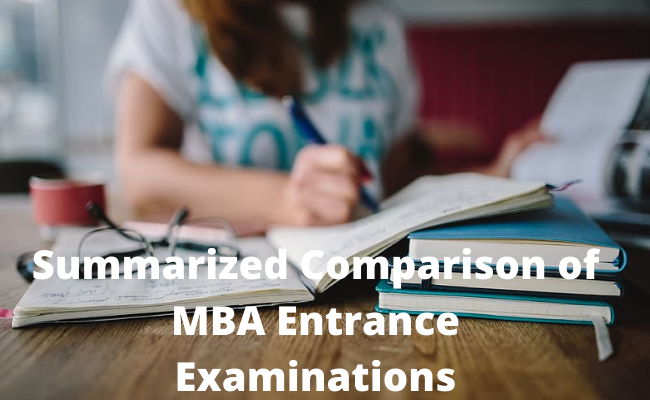
India has many prestigious management schools, including Indian Institutes of Management (IIMs), XLRI – Xavier School of Management, SP Jain School of Global Management, Management Development Institute (MDI), Indian School of Business (ISB), NMIMS School of Business Management, and Symbiosis Institute of Management Studies. With many schools, the criteria for admissions at these schools can vary greatly.
As a result, the majority of these schools conduct individual exams similar to the Common Admission Test (CAT) conducted by IIMs.
Although most schools typically consider the CAT scores for admission, some of the major schools for a Xavier Aptitude Test (XAT), Common Management Admission Test (CMAT), Symbiosis National Aptitude Test (SNAP), Management Aptitude Test (MAT), and NMIMS Aptitude Test (NMAT), are some of the tests conducted for entrance into MBA programs.
Admissions into business schools in India is becoming increasingly fierce. In this article, we discuss different entrance tests conducted by business schools:
- Conducted by IIMs for entrance into the post-graduate management programs for IIMs, FMS, MBA at IITs, SPJIMR, MDI, IMT, and IMI, including some more MBA colleges.
- CAT is a 3-hour, computer-based test with 100 questions on verbal ability & reading comprehension, data interpretation & logical reasoning, and quantitative ability.
- The exam has negative scoring and is considered moderately difficult.
XLRI-XAT 2020
- Conducted by XLRI Jamshedpur, and the scores are accepted by different institutes, including XLRI, XIMB, IMT, SPJIMR, and 150 other MBA colleges.
- XAT is a computer-based test with 99 MCQs and 1 essay question. The exam requires three and a half hours for completion and includes questions on English language & logical reasoning, quantitative ability & data interpretation, and general knowledge and essay questions.
- The exam has selective negative marking and is considered highly difficult.
- IIFT entrance exam is mandatory for candidates wanting admissions into the MBA (IB) program at the Indian Institute of Foreign Trade.
- This is a pen and paper-based test with around 114–128 questions. The test requires 2 hours for completion, with a higher difficulty level than the CAT. The test evaluates candidates for their verbal ability, reading comprehension, logical reasoning, data interpretation, quantitative analysis, and general awareness.
- The IIFT exam has negative marking.
- SNAP is conducted by Symbiosis International University (SIU) in Pune. The exam is mandatory for candidates wanting admission into any of the 15 Symbiosis colleges, such as Symbiosis Institute of Management, Pune.
- This is a two-hour test with 150 questions on a wide range of topics including general English; analytical & logical reasoning; quantitative reasoning, data interpretation, & data sufficiency; and current affairs.
- The SNAP exam has negative marking and is considered moderately difficult.
- Conducted by Graduate Management Admission Council (GMAC). The exam is mandatory for candidates aiming for admission into NMIMS in Mumbai and other campuses. The NMAT scores are also accepted by other renowned MBA institutes, such as XIM Bhubaneswar and VIT Vellore.
- NMAT is a two-hour test without negative marking. It tests candidates on various subjects, including language skills, logical reasoning, and quantitative skills.
- The exam does not have negative marking and is considered relatively moderate.
- The MAT exam is conducted by the All India Management Association. The exam can be given in either mode, a computer-based or a pen and paper-based test.
- The two and a half-hour exam comprises 200 questions on different topics, including Indian and Global Environment, Language Comprehension, Data Analysis & Sufficiency, Mathematical Skills, and Intelligence & Critical Reasoning.
- The exam has negative marking and is considered moderately difficult compared with CAT.
Stay connected with fellow students on PaGaLGuY for MAT Exam Discussion
